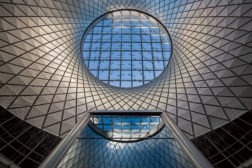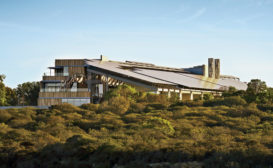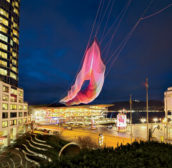Articles by Joann Gonchar, FAIA
The Bright Idea: NBBJ proposes a set of "shadowless" towers for London's rapidly changing skyline.
Read More
Innovations in Glass
Continuing Education: Double-Skin Buildings
Thick-Skinned: Two very different buildings deploy double curtain walls to satisfy the competing demands of transparency, efficiency and comfort.
Read More
Innovations in Glass
Continuing Education: Large, Flat Glass
Bigger, Flatter, Clearer: Two towers rising in Shenzhen, China, demonstrate SOM's approach to creating transparent and pristine facades.
Read More
Ruth Caplin Theatre, University of Virginia
A 300-seat performance space takes cues from the topography of its site.
Read More
Boston University Law School Renovation & Expansion
Sert Re-Asserted: A renovation and expansion of a midcentury academic tower restores a master's legacy.
Read More
Approaching Zero
Design teams reach the once-elusive goal of creating buildings that produce as much energy as they consume.
Read More
The Engineering of Art
Artists who use public space as their canvas often depend on structural experts to help them realize their visions.
Read More
Copyright ©2024. All Rights Reserved BNP Media.
Design, CMS, Hosting & Web Development :: ePublishing



